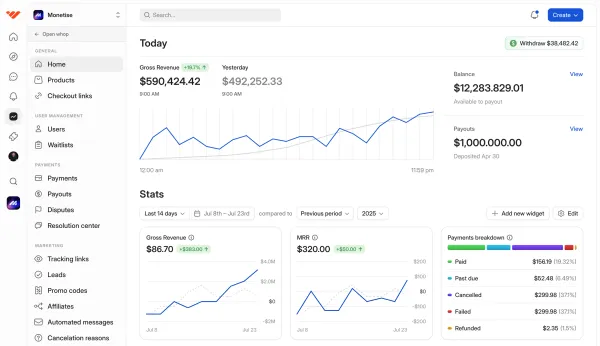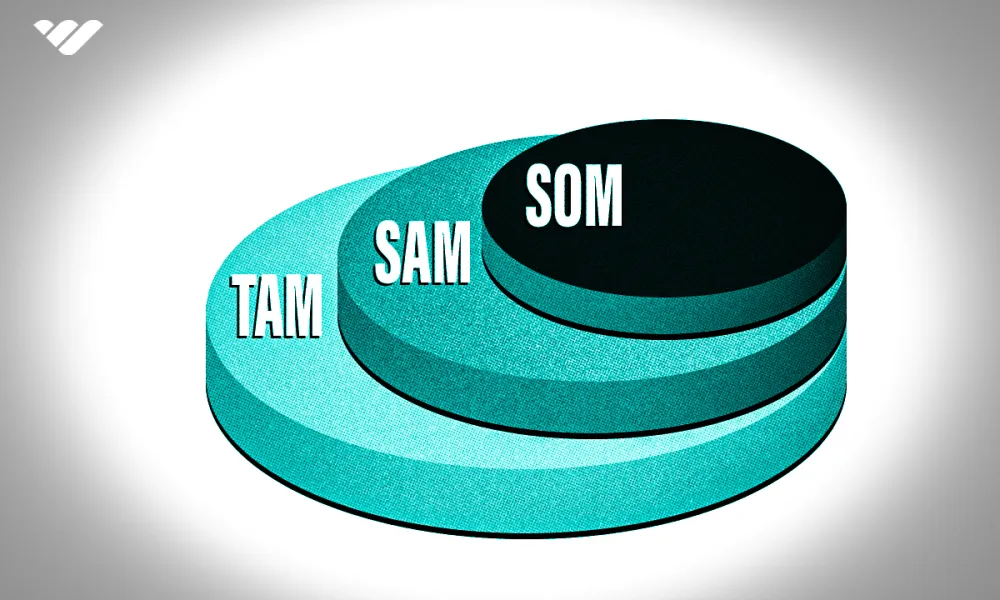Discover what a good marketing campaign is, different types, examples and expert tips in our extensive guide.
Did you know that the first modern marketing campaign was created in 1864 by London department store Selfridges? The brand pioneered the art of window displays and seasonal promotions to turn shopping into an experience rather than just a transaction.
So what exactly is a marketing campaign?
Picture a conductor leading an orchestra. Each instrument plays its part, but together they create something magical. That's what a good campaign does – it coordinates different marketing efforts around one central goal or message.
Maybe you're trying to launch an exciting new product, get your brand name out there, or boost your sales numbers.
Whatever your goal, a well-planned marketing campaign uses various channels and tactics to help your message stand out in a world where everyone's competing for attention.
What is a marketing campaign?
A marketing campaign is a series of promotional activities designed to achieve a specific business goal. It combines various marketing channels and tactics – like social media, advertising, and content – to deliver a focused message to your target audience within a set timeframe.
Marketing campaigns can range from simple email promotions to complex multi-channel launches. The key is to have a clear objective, know your target audience, and choose the right mix of marketing tools to reach them effectively. Success comes down to good planning and sticking to the plan.
Further reading: Tips for marketing campaign success.
10 types of marketing campaigns
From traditional print ads to modern social media strategies, marketing campaigns come in many forms, each designed to connect with audiences in unique and memorable ways.
Let's take a look at them.
1. Social media marketing campaigns
Social media campaigns are a great way to connect directly with your customers. You'll reach your target audience on Instagram, Facebook, X, and LinkedIn while tracking every like, share, and comment. Studies show that 93% of marketers consider social media essential for their business.
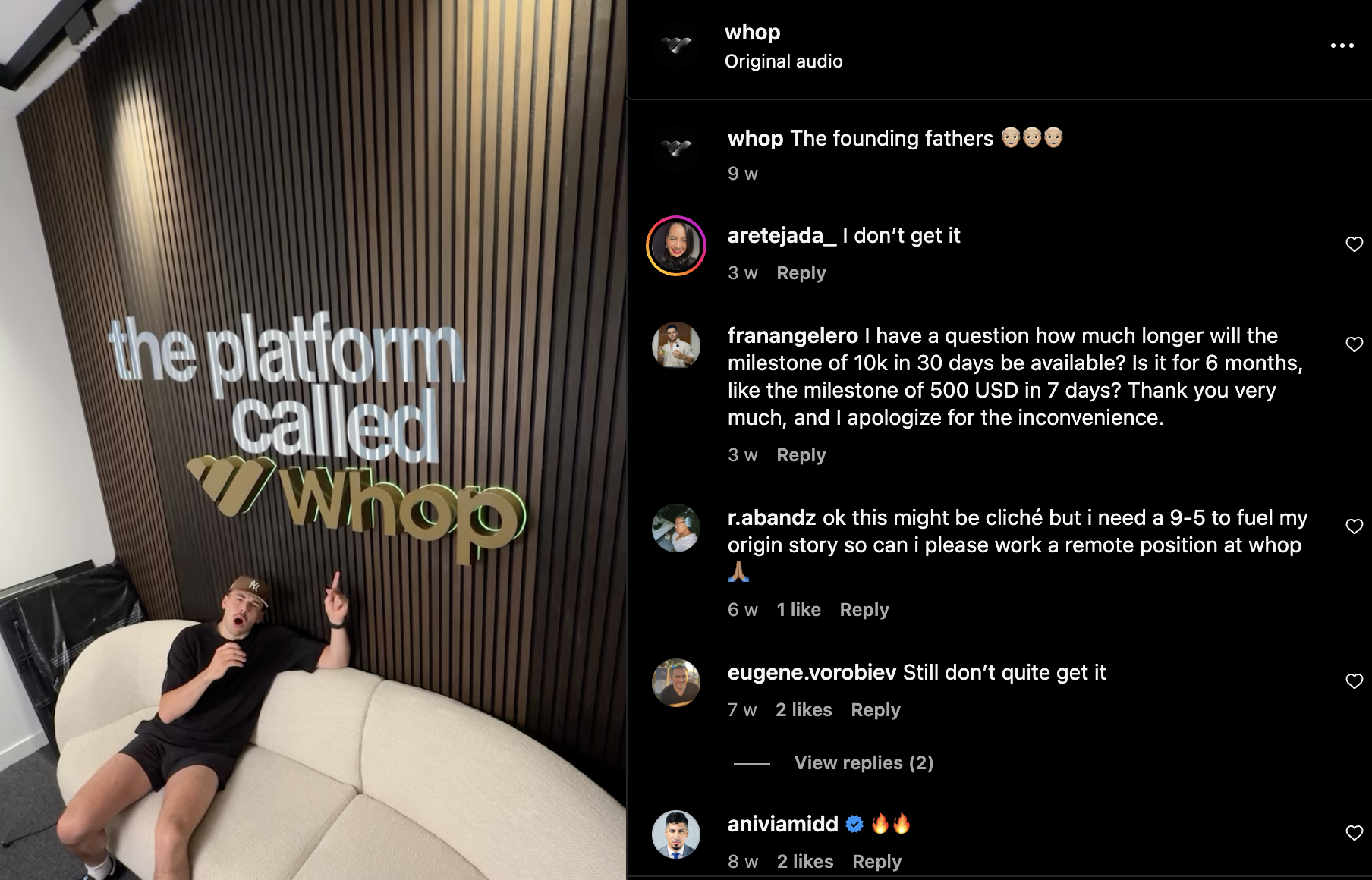
Build brand awareness, create shareable content, foster genuine connections, launch contests and watch your engagement soar. Your success hinges on tapping into trending topics and encouraging user-generated content.
2. Content marketing campaigns
Your expertise deserves to be shared. Content marketing lets you showcase your knowledge through blogs, whitepapers, eBooks, and videos. Companies that blog generate 67% more leads than those that don't.
Map your content to your customer's journey. Solve their problems. Answer their questions. When you provide real value, you'll establish yourself as an industry leader that customers trust.
Need an example? You're looking at it! The Whop blog is a prime example of content marketing.
- Benefits of blogging for business: Why you should include a blog in your digital marketing plan
- What is commerce content?
3. Email marketing campaigns
Don't underestimate email. It packs a punch with a whopping 4,200% ROI – that's $42 for every $1 you spend. Send newsletters that inform. Craft promotional offers that convert. Remind customers about abandoned carts. Personalize your messages.

When you segment your email list properly, you'll boost your open rates by an average of 14.31%. The secret?
Timing. Targeting. Testing.
With 77% of marketers seeing an increase in email engagement over the last 12 months, adding email marketing is a must-do for any business owner.
4. Influencer marketing campaigns
Put your brand in the spotlight by partnering with influencers that your audience trusts. Nearly 90% of marketers say ROI from influencer marketing is comparable to or better than other channels.
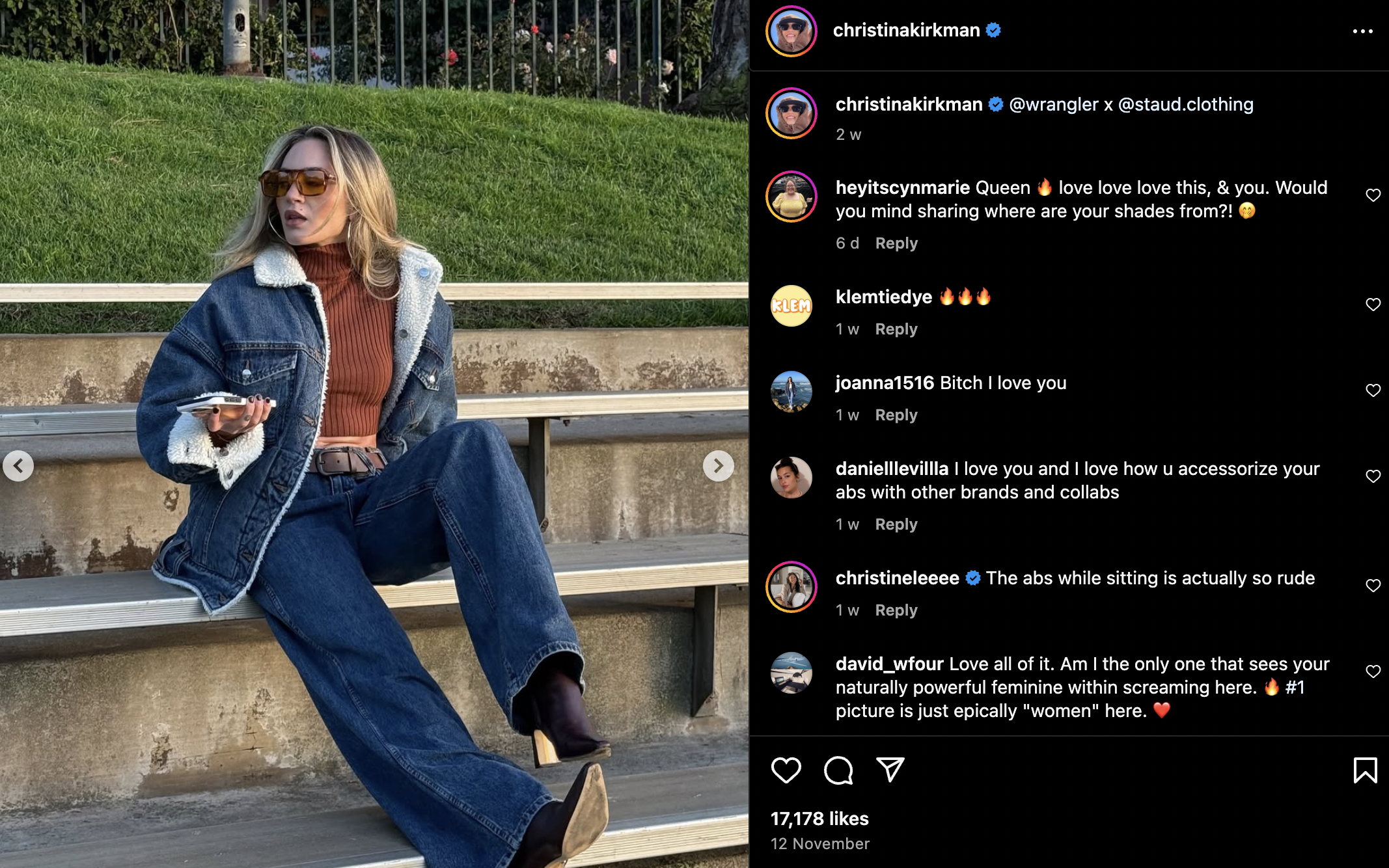
Find influencers who align with your values. Let them tell your story authentically. Turn their followers into your customers.
5. Pay-per-click (PPC) campaigns
Need immediate visibility? PPC puts you at the top of search results instantly. The best part? You only pay when interested customers click your ads. Target specific keywords. Set your budget. Track every conversion.
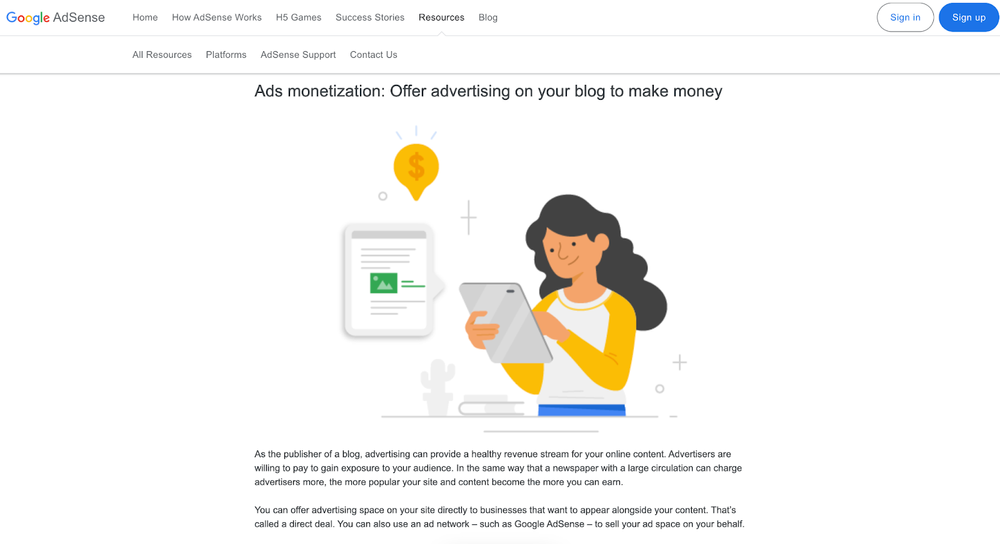
With Google Ads delivering an average ROI of 200%, you can turn clicks into customers faster than ever. Whether you're a local business or global brand, PPC advertising delivers measurable results. Start small and scale up as you see what works.
6. Seasonal marketing campaigns
Capitalize on the calendar. Strategic timing of seasonal promotional campaigns can dramatically impact your bottom line. Carefully orchestrated Black Friday events create buying frenzies, while back-to-school promotions speak directly to parents' hopes and concerns for their children.

Holiday-themed marketing campaigns should artfully blend festive visual elements with compelling offers, creating an immersive brand experience that stands out in the crowded seasonal marketplace.
By crafting time-sensitive promotions with genuine scarcity and clear value propositions, you can create a sense of urgency that spurs customers to take action rather than postpone their purchase decisions.
7. Brand awareness campaigns
To build a brand that sticks, start with thoughtfully sharing your story across multiple channels. You want to make sure every piece works together naturally. Don't be afraid to grab attention with bold, eye-catching visuals that speak to your audience. Develop a unique tone and personality that sets you apart from competitors.
Here's an example of a great brand awareness campaign - the message is short, to the point, yet memorable and conveys the brand's tone.
Here's something worth knowing: it usually takes 5-7 meaningful touchpoints before your brand really clicks with customers. That's why every interaction needs to pack a punch.
Do it right, and you'll turn everyday viewers into devoted fans who instantly recognize your unique voice in the marketplace.
8. Customer loyalty campaigns
Keeping your current customers happy actually costs 5-25% less than finding new ones — and it's much more rewarding for everyone involved. Building lasting relationships with your customers through thoughtful loyalty programs and genuine appreciation creates a natural cycle of growth that benefits your entire community.
Think of exclusive deals and personalized experiences as a way of saying "thank you" to those who've supported your business journey. When you make your loyal customers feel truly valued, they become more than just customers — they become enthusiastic supporters who love sharing their great experiences with others.

Your customers’ genuine recommendations to friends, family, and colleagues naturally bring new faces through your door and help your business flourish in the most authentic way possible.
9. Guerrilla marketing campaigns
Great marketing doesn't always need a big budget – sometimes the most powerful campaigns start with a clever idea that surprises people.
When your audience encounters something unexpected and delightful, they naturally want to tell others about it. This word-of-mouth effect can create momentum that builds your brand organically.
Consider how Red Bull built their empire: not through traditional advertising, but through creative initiatives like Red Bull Air Race and Red Bull Crashed Ice that got people talking and sharing. Their success shows how imaginative marketing can transform a brand's trajectory.
10. 'Good cause' marketing campaigns
Connecting your brand with authentic purpose has never been more vital to business success. Market research reveals that 77% of consumers prioritize purchases from organizations that are actively working to create positive change in the world.
When you openly track and share the real results of your good work, people take notice – and trust grows naturally. Your audience sees that you mean what you say.
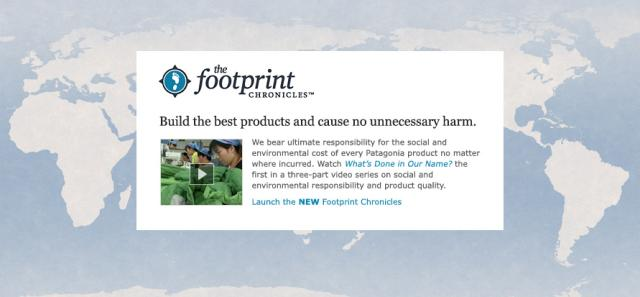
Patagonia, for example, demonstrates transparency by openly sharing its environmental impact reports that detail both successes and failures in its supply chain sustainability effort. The brand publishes the full "Footprint Chronicles" that track each product's journey from source to consumer – even when revealing uncomfortable truths.
By making purpose part of everything you do, you do more than build a stronger brand; you create positive change that touches real lives in your community. When people see your genuine commitment to making things better, they don't just support you – they become part of your story, eager to help create positive change alongside you.
Remember: your perfect campaign mix depends on your goals, audience, and resources. Start with one type. Measure your results. Adjust your approach. Then expand into other channels as you grow.
Key components of a marketing campaign
As you can see, there are multiple types of marketing campaigns that you can run - but they all have the same key components.
A marketing campaign succeeds by bringing together different elements that work in harmony.
- Well-crafted content connects with audiences through carefully chosen channels.
- Clear objectives guide decisions, while audience insights inform messaging.
- Teams track results, allocate resources effectively, and maintain consistent branding throughout.
Let's take a closer look at what you need to include in your marketing campaigns.
Goals and key performance indicators (KPIs)
Your campaign's success hinges on clearly defined objectives and reliable tracking mechanisms. Setting goals and KPIs are a way to establish precise, quantifiable targets and implement the right metrics to monitor your progress.
For instance, if you're launching a content marketing campaign, you might set these specific benchmarks:
- Monthly organic traffic targets for each piece of content.
- Lead generation goals (new contacts, newsletter signups).
- Engagement metrics (time on page, social shares).
- Conversion rates from visitors to qualified leads.
Choose the appropriate analytics tools to track these KPIs such as Google Analytics for traffic and user behavior and Looker for detailed data visualization and insights. Social media analytics can show you content reach and engagement.
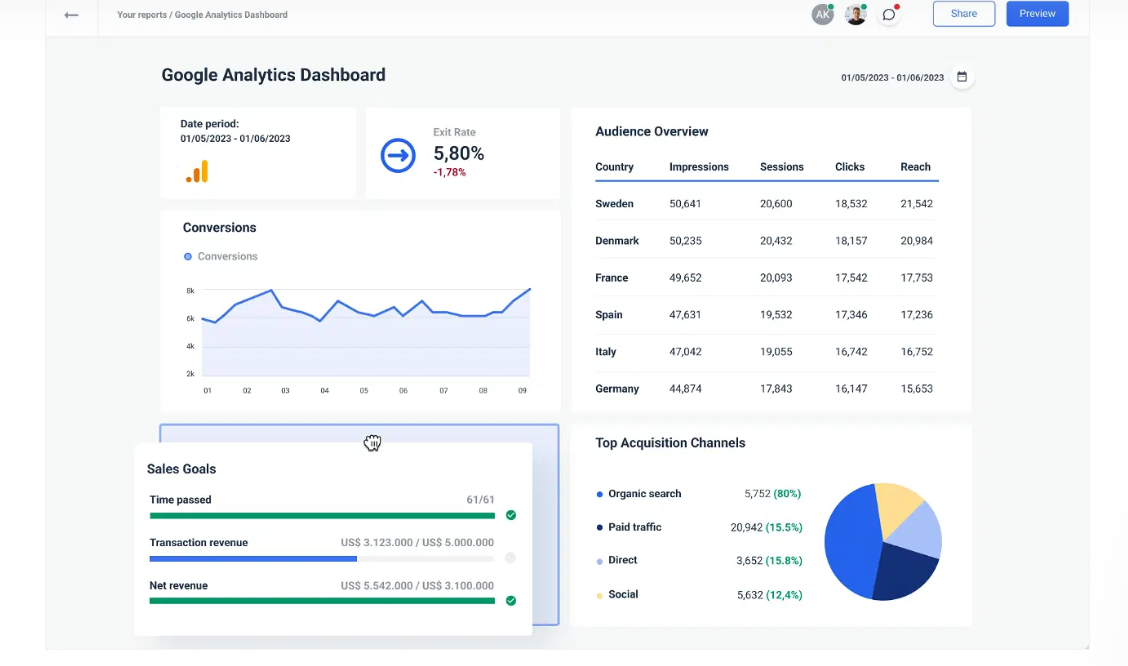
Channel
Your campaign's reach and impact depend heavily on choosing the right channels to connect with your target audience, as a well-planned channel strategy ensures your message reaches potential customers where they're most receptive and engaged.
When selecting channels, consider your audience's preferences and behaviors. For example, a B2B software campaign might prioritize these channels:
- LinkedIn for professional audience targeting and thought leadership.
- Industry-specific webinars and virtual events.
- Email marketing for nurturing qualified leads.
- Search engine marketing for high-intent prospects.
Each channel should serve a particular purpose in your campaign ecosystem. Social media might drive initial awareness, while email nurtures relationships, and paid search captures bottom-funnel conversions.
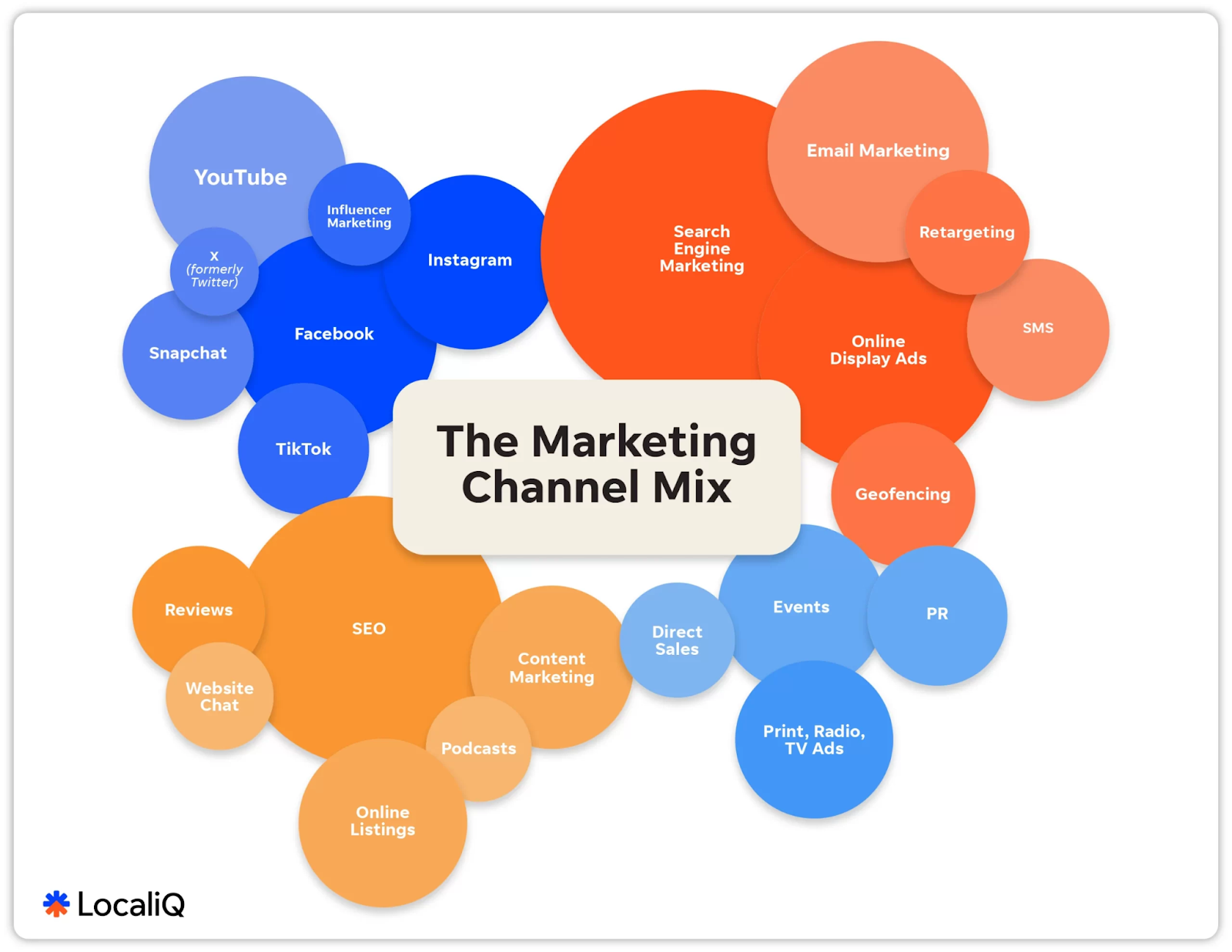
When evaluating channels, consider where your audience is present and most active, the cost per acquisition for each channel and integration capabilities with your existing marketing stack.
Budget
Effective budget management is the backbone of any successful marketing campaign. Your budget decisions directly impact campaign reach, content quality, and ultimate ROI. Start by allocating funds across your chosen channels based on historical performance data and your campaign objectives.
Consider both fixed costs like content creation and variable expenses such as ad spend or influencer partnerships. Build flexibility to shift resources between channels as performance data comes in. Track key metrics like cost per acquisition and customer lifetime value to ensure your spending generates meaningful returns.
Do a budget review periodically to identify opportunities to scale successful tactics or cut underperforming initiatives. Read our guide to zero-based budgeting for more budget tips.
Content formats
Your content is the fuel that drives engagement, educates your audience, and motivates action. A well-planned content mix ensures you deliver value at every stage of the customer journey while maintaining consistent messaging across touchpoints.
Consider creating multiple formats that cater to different learning preferences and consumption habits.
For example, a comprehensive campaign might include educational blog posts, video demonstrations, downloadable whitepapers, infographics, interactive content like quizzes, and social media content optimized for each platform.
Each piece should align with specific campaign objectives and audience needs, while maintaining brand consistency across all formats.
Marketing team
Who are you relying on to get the job done? Before you kickstart your campaign, designate people to work on every aspect of the campaign. You should know who handles copywriting, design, media buying, and reporting. Having clear roles and responsibilities prevents overlap, ensures accountability, and maintains a smooth workflow throughout the campaign lifecycle.
Your core campaign team should include a project manager to oversee timelines, creative professionals for content and design, digital marketing specialists to optimize channels, and analytics experts.
Remember to identify backup personnel for critical roles and establish clear decision-making protocols from the start.
Creative assets
Your creative assets are the visual ambassadors of your brand. Through carefully chosen colors, typography, and imagery, they communicate your brand's value proposition.
This may include social media graphics that encourage sharing, video content that tells your story, or email templates to drive conversions. Consider how different elements work together to create a cohesive brand experience.
Remember that great design isn't just about aesthetics – it's about functionality and purpose. Your assets should guide users toward desired actions while maintaining brand consistency and professional polish throughout the entire campaign journey.
How to create a successful marketing campaign
If you’re wondering, “How do I get started from here?”, we’ve got you covered.
Once you identify your key goals, you can start mapping out the strategies and tactics that will help you (and your clients) get there.
1. Plan your marketing campaign
This first step is crucial for your marketing campaign to be effective. The planning stage will determine how you measure success and will guide your team when things go awry.
Set a purpose and goal for your campaign
Let’s start simple. Why are you running this campaign? What do you want the campaign to accomplish for your business?
If you’re struggling to define your campaign purpose, start broad. We recommend reviewing a set of goals like the ones below to identify what’s most closely aligned with your own:
- Promote a new product or service
- Increase brand awareness
- Generate leads
- Get customer feedback
- Boost user engagement
- Drive revenue
- Advertise an event
This isn’t a definitive list, but the idea is to familiarize you with the general business goals a campaign can help reach.
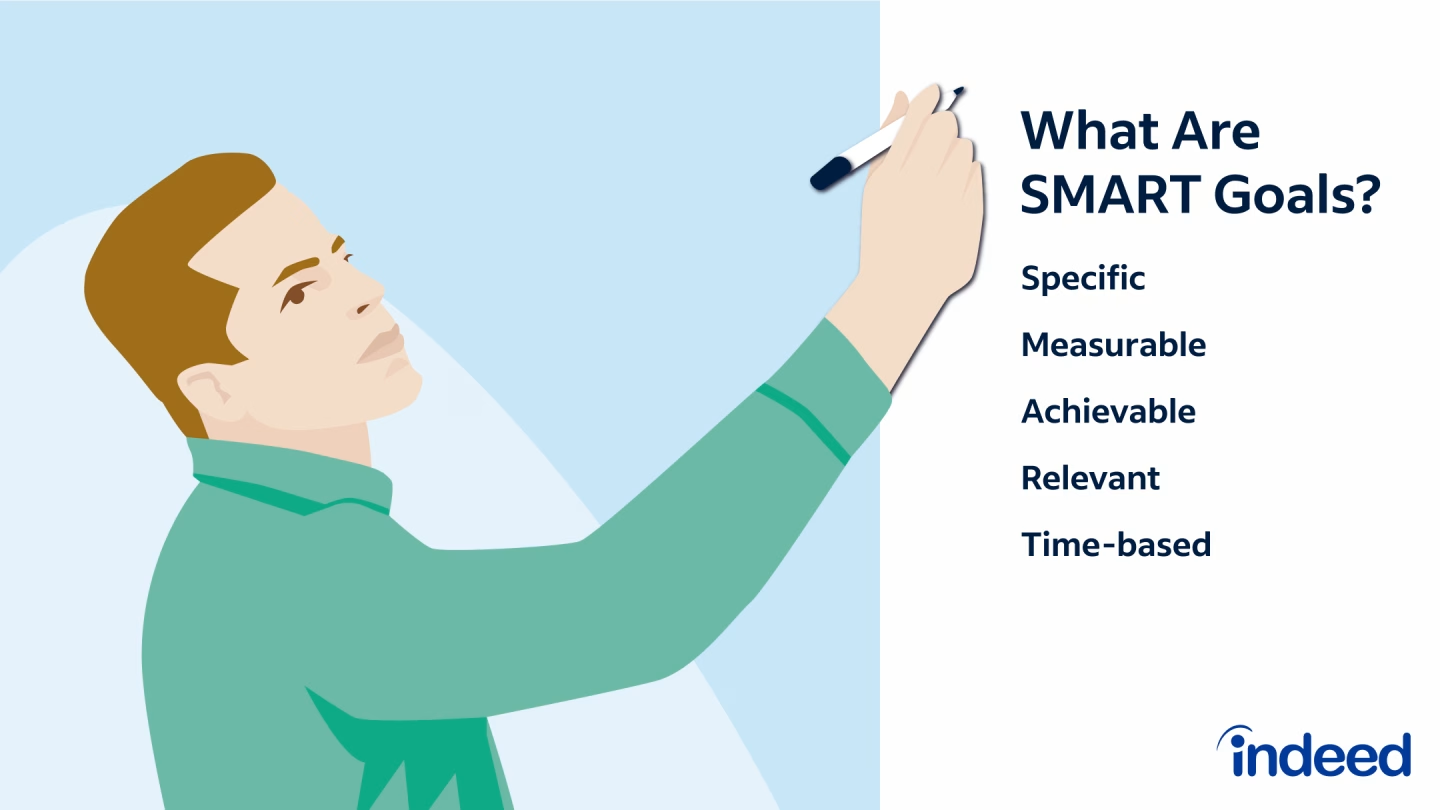
Now that you have your key goals, the next step is to convert your broad campaign purpose into a S.M.A.R.T. goal. Let’s take “Get customer feedback” as an example: “The goal of my marketing campaign is to gather user feedback from 100 customers via a branded hashtag on Instagram on our new product line by December 31.”
The goal is specific (user feedback), measurable (100 customers), attainable (via a branded Instagram hashtag), relevant (featuring the new product line), and timely (by December 31).
See how this broad campaign purpose instantly transforms into an actionable, attainable goal?
Pro tip: Setting SMART Goals is simple when you have the right tools. Check out the free SMART Goal-Setting template below to get started on this critical piece of your marketing campaign.
Establish how you’ll measure your campaign
Marketing teams track different success markers across their channel mix and campaign goals. They analyze newsletter engagement, monitor social media growth, and measure advance purchase numbers. Smart marketers often combine several key metrics to gain a complete performance picture.
Your campaign's central objectives determine which metrics matter most. Let's explore how different goals connect to specific performance indicators.
- Promoting a new product or service: Pre-orders, sales, and upsells.
- Increasing brand awareness: Sentiment lift, social mentions, and press mentions.
- Getting customer feedback or content: Social mentions and engagement.
- Boosting user engagement: Blog or social shares, and email interactions.
- Driving revenue: Leads, sales, and upsells.
- Advertising an upcoming event: Ticket sales, vendor or entertainment bookings, and social mentions.
Running your marketing campaign across multiple channels? You need clear metrics for each platform.
Let's say you're launching your user-generated content (UGC) campaign through your social media, email, and blog. To measure your success, you should set key performance indicators (KPIs) for each channel. You might track:
- Your Instagram success through your engagement numbers (likes and comments) and profile mentions
- Your email performance by watching your open rates and measuring click-throughs
- Your blog impact by counting your views, clicks, and social shares
Next, you'll want to pick your main campaign KPI: in this case, your branded hashtag mentions on Instagram. While all your other KPIs show how well you're connecting with and engaging your audience, your primary KPI tells you exactly how close you are to hitting your SMART goal targets.
Finally, consider this: It’s certainly exciting to reach a predetermined goal, but that’s not always possible. What (outside of your goal) would be success for you?
Pro tip: Consider setting up some checkpoints along the way when deciding how you’ll measure your campaign.
For instance, if your campaign objective is to boost brand awareness, and your goal is to reach 50 PR mentions by the end of the year, set benchmark notifications at 10, 25, and 40 mentions.
This will serve as a reminder to keep pushing forward towards your goal and boost morale within your team.
Define your target audience
Imagine launching a meticulously planned marketing campaign only to hear nothing but silence.
You might blame your choice of platform or question your creative approach. But the real issue could lie with your audience selection.
Start by identifying which phase of the customer journey you're targeting. Is your goal to attract fresh prospects? Are you seeking input from your current customer base? Are you speaking to people who already know your brand? Or are you launching a completely new brand identity?
Your messaging needs to shift based on whether your audience is at the awareness, consideration, or decision stage. While your campaign might reach beyond your intended audience, it's essential to craft your message with a specific target audience in mind.
Now, understand what drives your audience and keeps them up at night. Here are key questions to explore with your team to get a clearer picture of who you're trying to reach.
- What fills your audience's daily life? Which publications capture their attention? What shows do they stream? How do they spend their downtime?
- Where do they leave their digital footprints? What drives them to use platforms like Instagram, Facebook, and other social networks? Are they active participants or silent observers?
- What type of content stops their scroll? Do direct sales pitches resonate with them? Are they drawn to clever, lighthearted messaging? Which cultural touchstones would spark recognition?
- What challenges are they facing that your product, service, or brand is uniquely positioned to address?
Pro tip: Survey existing and potential customers to learn more about your audience. Then, use the data to create buyer personas.
Set a concept for your campaign and connect with the right team
Marketing campaigns need a mission, vision, and visual identity. The best campaigns grow naturally from their parent brand, carrying forward its visual style and creative spirit. They manage to stand on their own while staying true to the company's established brand identity. Check out this article for inspiration on company slogans.
When it comes to bringing campaign materials to life, companies go about it in different ways. Some prefer to keep things in-house with their own team, while others find value in partnering with agencies. There's also the option to bring in freelancers or contractors for specific needs, whether that's writing compelling copy or creating eye-catching designs.
Pro tip: Start with an in-house team and move forward from there. They know your brand best and understand what it takes for your campaign to succeed.
2. Distribute your marketing campaign
Smart distribution ensures your marketing campaign reaches its target. Like a well-planned road trip, you need the right map, reliable fuel, and a clear destination.
Let's explore how to get your message where it needs to go.
Choose the channels on which you’ll run your campaign
Your choice of channels should align with where your audience spends time, your available budget, and how well different platforms engage with your brand. your existing media presence – which channels deliver the strongest results?
Consider which platforms offer advertising options that fit your needs, and look at engagement metrics across different channels. Above all, identify where your target customers are most active.
Set a timeline for your campaign
Start by establishing your campaign's key dates – both launch and end date. This foundation helps you map out a precise promotional strategy. From there, assess your marketing assets and distribution channels. By working backwards from your launch date, you can determine an optimal frequency for content distribution based on your available resources.
Consider each marketing channel separately to establish a sustainable rhythm. For example, social media might need daily attention, while email campaigns could work better on a weekly schedule. Plot these touchpoints on your calendar, to create a view of how your campaign will unfold across platforms. This ensures you stay consistent with your messaging and prevents audience fatigue.
Such a visual roadmap helps you balance promotional efforts across channels and ensures no platform is overlooked or overused.
Beyond organization, this birds-eye view shows where your resources are invested most heavily. After your campaign wraps up, you can review this map to measure your strategy's success and identify areas for improvement in future campaigns.
Pro tip: You can take the stress out of daily posting by using social media and email scheduling platforms. Tools like HubSpot and Buffer make it easy to plan, schedule, and manage your campaign content ahead of time.
3. Convert customers through your marketing campaign
With the right strategy, you'll transform window shoppers into brand enthusiasts faster than you can say "limited-time offer".
Ensure your campaign drives users toward a desired action
When your campaign successfully attracts attention and drives significant traffic, the next step is to ensure it achieves the desired action outlined in your SMART goal. Let's revisit that goal for clarity.
In my example campaign, I set this SMART goal: "to collect user feedback from 100 customers through an Instagram branded hashtag showcasing our new product line by December 31."
At this stage, you need to fine-tune your marketing strategies and channels to guide customers toward completing your intended goal. This is accomplished through strategic conversion elements such as calls-to-action, landing pages, and lead capture forms.
Speaking of landing pages, Whop is a great platform for selling.
Did you know, when you create a whop, your own slice of the internet, which comes with a customizable landing page (aka Store) to showcase your product offerings and drive sales? You can customize your store with a name, tagline, product photos, and features.
Pro tip: Marketing assets that drive conversions can work independently or together to maximize impact. For instance, you might embed a contact form within a landing page or design a compelling call-to-action that guides visitors to fill out your form.
Monitor the right metrics
While it's appealing to track vanity metrics such as traffic generation, click-through rates, and impressions, these metrics vary based on your marketing campaign type.
Though improvements in these areas are encouraging, they don't always translate to actual revenue growth. Measuring your campaign effectiveness can't rely solely on these surface-level indicators.
Consider these metrics as your starting point, but remember they're just part of a more comprehensive assessment.
4. Assess your marketing campaign
The post-campaign stage is as important as the planning stage. Analyzing campaign data can provide unique insights into your audience, marketing channels, and budget. It can also shape the strategy of future campaigns.
Establish success numbers and metrics
Begin with your initial SMART goal as your measuring stick. Whether you hit the mark or fall short, this first check gives you solid ground to stand on.
Let's say you aimed for 100K more organic blog views. Sure, any uptick counts as a win on paper – but let's be real. What matters is whether the return was worth all the hours and effort you poured in. That's what separates a technically successful campaign from one that actually moves the needle.
Pro tip: Getting excited about upticks in pre-orders, leads, views, or engagement is great – but don't lose sight of the bigger picture. Keep your eye on targets and manage your spending accordingly. That's how you'll know your campaign was worth the investment.
Transform your campaign data into action
Making sense of your campaign metrics can multiply your business results. While data shows you what happened, diving deeper reveals golden insights about your audience, marketing effectiveness, and creative success.
Let’s return to my Instagram campaign example cited earlier. In addition to meeting the goal of 100 posts with user feedback, the data collected in the process also offers insights into who your audience is. You can understand when and how often they post on Instagram, the languages they use, and how they use your product.
No matter what you're tracking – from lead captures and advance sales to social interactions or resource downloads – your campaign data holds the keys to elevating your entire marketing strategy.
Pro tip: Your work isn't done after pulling those final numbers. Gather your team for an honest post-mortem discussion. Challenge yourselves with questions like:
- Where did we see room for improvement?
- Which budget decisions could have been smarter?
- When things didn't go as planned, what were the root causes?
- What fresh insights did we gain about our target audience and platforms?
- What valuable feedback could we collect from our customers or event attendees?
Examples of highly-successful marketing campaigns
Here is some inspiration to help you on your marketing journey:
LEGO's "Rebuild the World" campaign
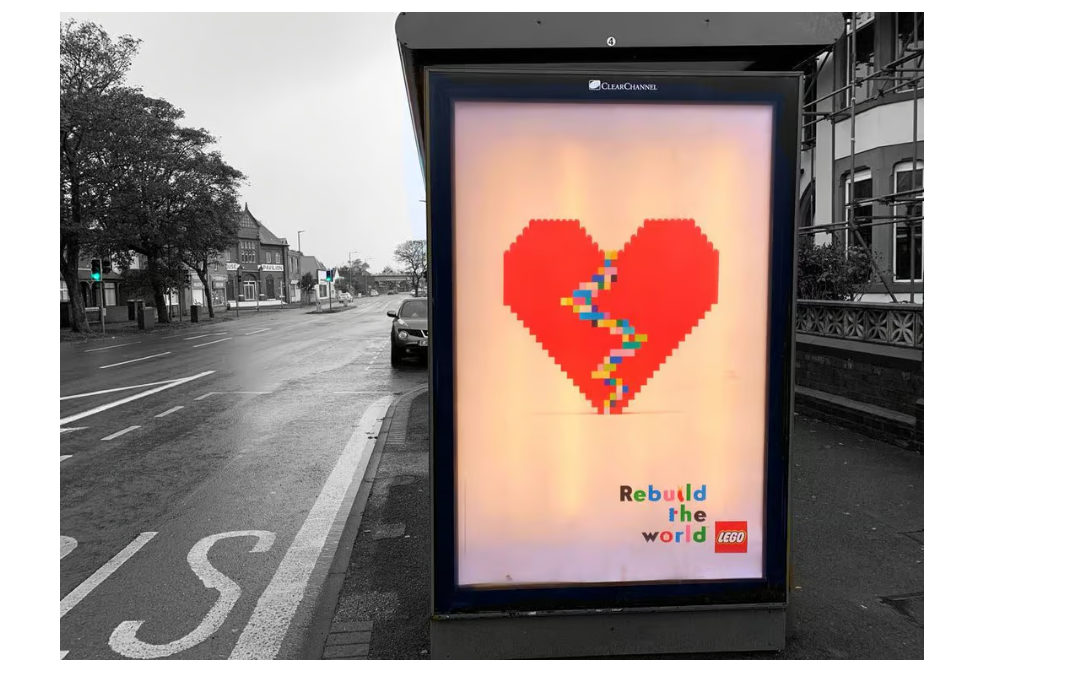
LEGO faced a modern dilemma: convincing parents and kids that physical toys still matter in a digital world. Their "Rebuild the World" campaign showed how LEGO bricks could bring imaginative problem-solving to life in unexpected ways.
The campaign featured surreal scenarios where children used LEGO-inspired solutions to solve real-world problems – like a firefighter putting out a fire with spaghetti or a knight crossing a canyon on a rocket-powered horse.
This creative approach reminded everyone that LEGO isn't just about following instructions – it's about unlimited possibilities. The campaign helped LEGO achieve 13% revenue growth in 2021 despite the pandemic, with consumer sales growing a whopping 21% when most traditional toy makers were struggling.
Spotify's "Wrapped" marketing campaign

Spotify transformed what could have been boring user statistics into an eagerly anticipated annual cultural moment. The "Wrapped" campaign packages users' listening data into shareable, personalized stories about their music journey throughout the year.
What makes this campaign brilliant is how it turns personal data into social currency – everyone wants to share their music taste and see what their friends are listening to.
The results speak for themselves: in 2020 alone, over 90 million users engaged with Wrapped. This generated massive organic social media buzz and countless memes, all while strengthening user connection to the platform.
Old Spice's "The Man Your Man Could Smell Like" campaign

Old Spice faced a challenge: they were seen as your grandfather's deodorant. They needed to appeal to younger men and, importantly, the women who often purchase grooming products for them. Enter the absurdist humor of "The Man Your Man Could Smell Like". The campaign's rapid-fire surreal scenarios and charismatic delivery created an immediate cultural impact.
In just six months after launch, sales jumped by 125%, with website traffic increasing by 300%. More importantly, Old Spice successfully transformed from a dated brand into a contemporary cultural icon. It proved that sometimes the best way to solve a serious business problem is to not take yourself too seriously.
Duolingo's TikTok Takeover
Duolingo turned their mascot, Duo the owl, into a certified TikTok sensation in 2023. Their challenge was standing out in the crowded ed-tech space while appealing to Gen Z.
Their solution? Let their green owl mascot loose on TikTok with unhinged, trend-chasing content that playfully terrorizes users who skip their language lessons.
The campaign's genius lay in its perfect understanding of TikTok culture – mixing absurdist humor with real-time trend participation. By the end of 2023, Duolingo had amassed over 8.5 million TikTok followers, and their marketing team reported a 40% increase in daily active users. Even better, they achieved this with minimal production costs, proving that creativity and cultural awareness can outperform big budgets.
Scale your marketing campaigns with Whop
Want to transform your marketing strategy? Whop is helping marketers break through their plateaus. You'll find courses taught by marketers who've actually done it – we're talking about experts who've generated millions and built serious followings. They share their exact strategies, not just theory.
You can also join communities filled with marketers who are facing the same challenges you are. Stuck on a campaign? Need feedback on your latest idea? The community jumps in with insights based on their real experiences. They'll help you spot trends early and adapt your strategies before everyone else catches on.
Think of Whop as your complete marketing ecosystem – you learn from the best, collaborate with peers who get it, and access partners who can amplify your success.
Ready to elevate your marketing game? Whop gives you the tools, knowledge, and connections to make it happen.
FAQs
We’ve answered the top questions on marketing including what is a campaign, optimization tips and more.
What is marketing?
Marketing is the process of identifying, predicting, and satisfying customer needs profitably. It is done by creating, promoting, and distributing products or services. Marketing involves understanding target audiences, developing effective communication strategies, building brand awareness, and delivering value to customers while achieving business objectives.
What is a digital marketing campaign?
A digital marketing campaign is a coordinated online promotional effort using channels like social media, email, websites, and search engines to achieve specific marketing goals such as increasing brand awareness, lead generation, or boosting sales, within a defined timeframe and budget.
What is the most important thing to consider when optimizing a search engine marketing campaign?
The most important factor in optimizing search engine marketing is to understand and target user intent through relevant keywords. This ensures your ads appear to people who actively search for your products/services. It maximizes conversion potential and ROI from your ad spend.
What is campaign marketing?
Campaign marketing is a strategic, time-bound promotional effort focused on achieving specific business goals through coordinated marketing activities. It typically involves multiple channels like social media, email, and advertising to deliver a unified message and drive targeted customer actions during a set period.



